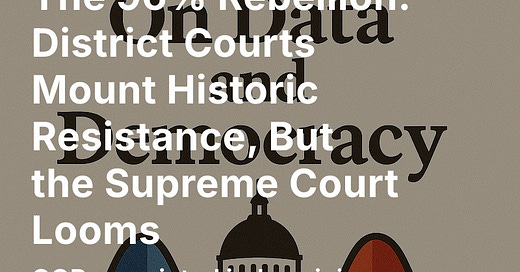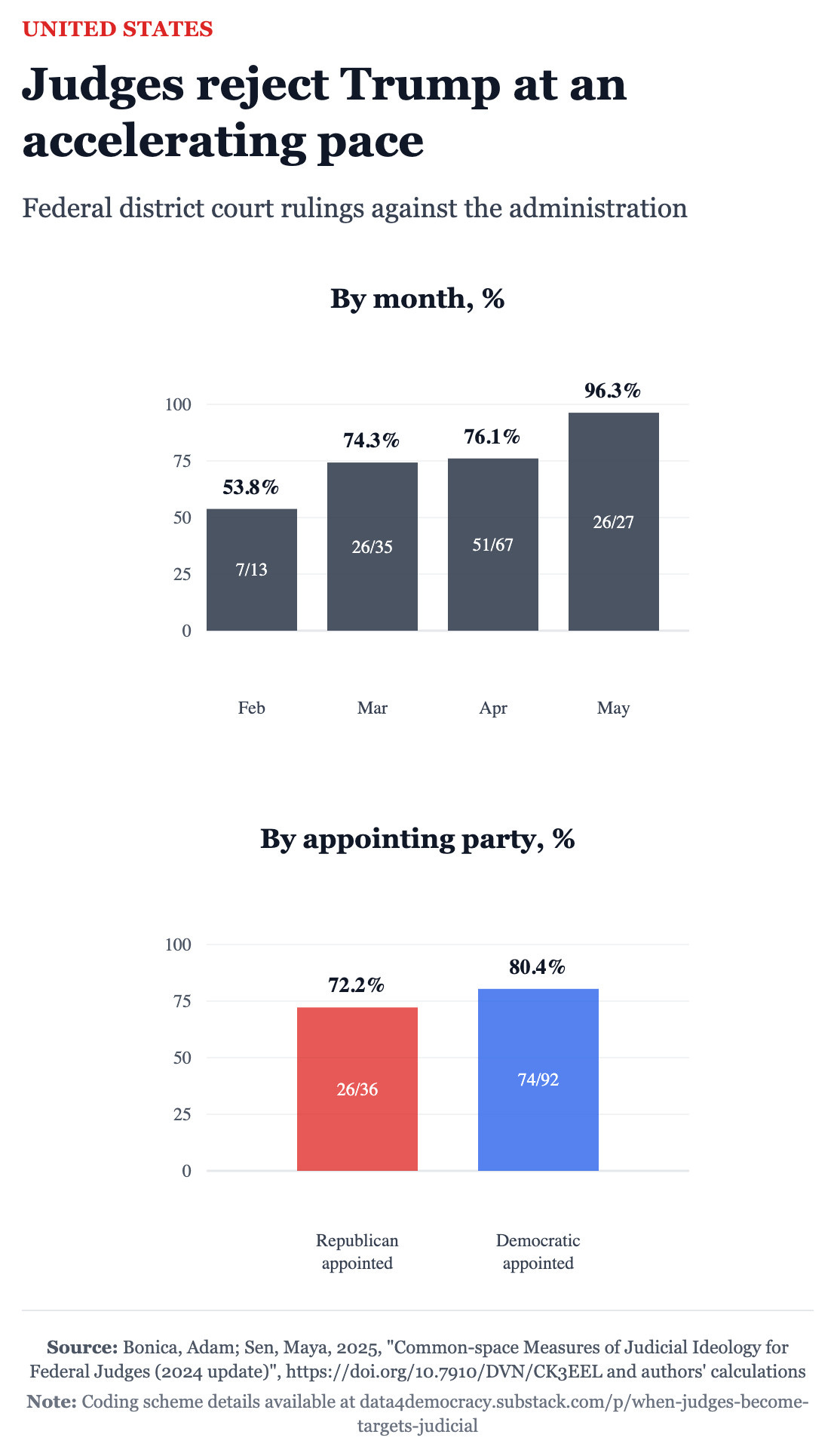The 96% Rebellion: District Courts Mount Historic Resistance, But the Supreme Court Looms
GOP-appointed judges join an unprecedented judicial pushback against executive overreach. The data is stunning—but will it matter when cases reach higher courts?
In May 2025, federal district courts ruled against the Trump administration in 26 of 27 cases—a stunning 96% loss rate. This represents a dramatic acceleration of the cross-ideological resistance I documented in March. This isn't just another data point; it suggests a potential inflection point in the judiciary's engagement with an executive that has consistently tested constitutional boundaries.
The data points to several converging factors behind this judicial rebellion. Most compelling is a collision of loyalties. The Trump administration's escalating attacks on the legal profession itself—from targeting major law firms to individual judges, culminating in the unprecedented federal arrest of Judge Dugan—appears to have triggered a defensive reflex. Judges, even highly partisan ones, often harbor deep-seated loyalties beyond political alignment: to the integrity of their profession, to the judiciary as an institution, and to the elite educational establishments that trained them. When forced to choose between political allegiance and professional identity, many are choosing the latter.
The nature of the cases themselves reinforces this pattern, particularly in civil rights and immigration spheres. The administration is presenting courts with executive overreach built on demonstrably false claims and flimsy legal foundations. Such blatant disregard for constitutional norms and basic rights makes it nearly impossible for judges to rule favorably without abandoning bedrock legal principles. Put simply: the legal arguments are too weak, the overreach too plain, the facts too damning.
District courts, as the data consistently shows, remain the primary arena of meaningful judicial friction against executive power. Yet this surge must be viewed soberly. As I documented in April, this pattern inverts dramatically at the appellate level, where conservative circuit judges rule for the administration 88% of the time. The Supreme Court's extreme deference to Trump—most starkly in its sweeping presidential immunity decision—suggests that district court resistance, while crucial for buying time and documenting abuses, may ultimately prove temporary.
The decisive battles over the rule of law will likely culminate before a Supreme Court that has thus far shown little willingness to check executive power when that executive aligns with its ideological preferences. The district court rebellion may be buying us time, but without broader democratic mobilization—as I argued in March—these constitutional guardrails will likely prove temporary stopgaps.
The district court judges are doing their part, applying law over loyalty at rates that should make us both hopeful and worried. Hopeful because it shows the judiciary's capacity for independence even in polarized times. Worried because this resistance faces a hostile appellate system and a Supreme Court that has already signaled its priorities.
A 96% loss rate would be unthinkable for any normal presidency. But we're not in normal times. These district court rulings are less judicial outcomes than distress signals. Every one of these rulings faces appeal to a Supreme Court that has already chosen power over principle. District courts can delay, but the Supreme Court can decide. Without broader mobilization, May's 96% will become a historical footnote about the month the judiciary tried—and failed—to hold the line.






Calling it a rebellion or resistance make it seem like an ideological or political movement, which it isn't. It is judges enforcing the law and Constitution. The fact that they are equally R- and D-appointed judges makes the point.
Helpful analysis! Helps to see through the noise to the signal: Virtually everything that Trump does is illegal or unconstitutional.